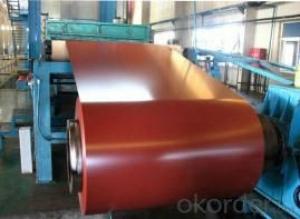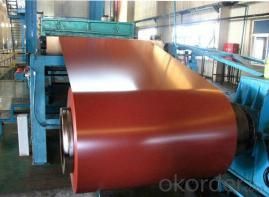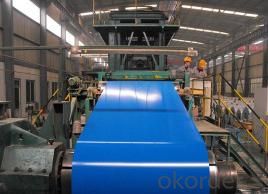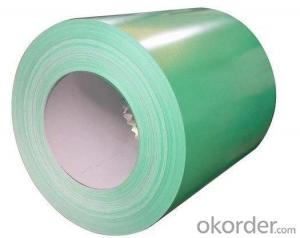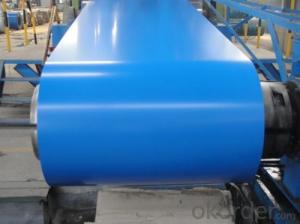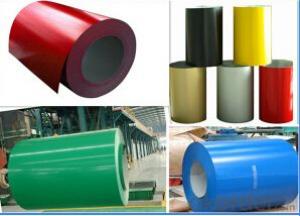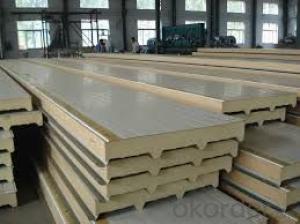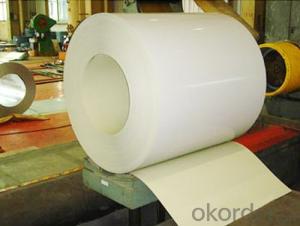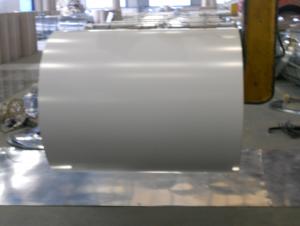PPGI/Prepainted Steel Cois L/Prepainted Galvanized Steel Coil
- Loading Port:
- Tianjin
- Payment Terms:
- TT OR LC
- Min Order Qty:
- 25 m.t.
- Supply Capability:
- 10000 m.t./month
OKorder Service Pledge
OKorder Financial Service
You Might Also Like
Description:
Model NO.:CGCC, SGCC, DX51D, DX51D+Z, TDC51D, TDC51D+Z, G550
Surface Treatment:Coated
Certification:ISO, SGS
Technique:Cold Rolled
Standard:ASTM, JIS, GB, AISI, DIN, BS
Application:Building Material, Steel Structure Buildings
Edge:Mill
Stock:Stock
Steel Grade:Q235
Width:30-1250mm
Thickness:0.12-1.5mm
Color:All Ral Color or as Your Requirement
Port of Loading:Qingdao
Export Markets:Global
Additional Info.
Trademark:JIACHENG
Packing:Standard Seaworthy Package
Standard:JIS G3312 CGCC ASTM A755M EN10169
Origin:China
HS Code:72107010
Production Capacity:300000 Tons/Year
Product Description
Product Name: PPGI/ Prepainted Galvanized Steel Coil/Color Coated Steel/Color Coated Galvanized Steel/Color Coated Galvalume Steel
Product details:
Standard: AISI/JIS/ASTM/BS/DIN/GB
Steel Grade: Q195, Q345, DX51D+Z, DX51D+AZ, DX52D+Z and so on
Raw material: Non-alloyed galvanized(GI) or Al-Si galvanized(GL)
Color: All RAL colors( standard international color) or customers samples color
Thickness: 0.13-0.8mm
Width: 600-1250mm
Length: As per customer requirement
Coin weight: 3-5tons
COIN ID: 508mm/610mm
Zinc thickness: 40G/M2-180G/M2
Technique: Cold rolled, hot-dipped galvanizing, color coated
Paint thickness: Top and bottom: 20mic+5mic RMP; Back: 6mic-8mic
Tolerance: Thickness: +/-0.02mm; Width: +/-2mm
Packaging details: Wrapped by plastic film and water-proof paper, and then fastened on wooden pallet...Or as per customer requirement
Pre-painted Steel Coil uses hot galvanized steel as its basic material, factory adopts advanced equipment to degrease, rinse, transform the galvanized steel, and then make primary and refined lavation to the steel coils.
Feature Pre-painted Steel Coils have excellent performance of decoration, corrosion resistance etc.
The special order can be negotiated.
APPLICATION
Outdoor: Roof\ Roof structure\Surface sheet of balcony\ Frame of window\Door of garage\Roller shutter door\Persian blinds\Cabana and so on.
Indoor: Door\Isolater\Frame of door\Light steel structure of house\\Folding screen\Ceiling\Internal decoration of toilet and elevator.
Building accessories: Window panels, signboards Home appliances: Oil/gas boilers, rice buckets, portable gas burners, etc.
| Construction | Outside | Workshop, agricultural warehouse, residential precast unit, corrugated roof, roller shutter door, rainwater drainage pipe, retailer booth |
| Inside | Door, door case, light steel roof structure, folding screen, elevator, stairway, vent gutter | |
| Electrical appliance | Refrigerator, washer, switch cabinet, instrument cabinet, air conditioning, micro-wave oven, bread maker | |
| Furniture | Central heating slice, lampshade, chifforobe, desk, bed, locker, bookshelf | |
| Carrying trade | Exterior decoration of auto and train, clapboard, container, isolation lair age, isolation board | |
| Others | Writing panel, garbage can, billboard, timekeeper, typewriter, instrument panel, weight sensor, photographic equipment | |
- Q: What are the benefits of using coated steel coils in roofing applications?
- There are several benefits of using coated steel coils in roofing applications. Firstly, coated steel coils are highly durable and provide excellent resistance against corrosion. The coatings applied to the steel coils act as a barrier, protecting the underlying metal from exposure to moisture, chemicals, and harsh weather conditions. This ensures that the roofing system remains intact and functional for an extended period, reducing the need for frequent repairs or replacements. Secondly, coated steel coils offer superior strength and structural integrity. Steel is known for its high tensile strength, and when combined with the protective coating, it becomes even more resilient. This makes coated steel coils an ideal choice for roofing applications, as they can withstand heavy loads, extreme temperatures, and strong winds without compromising the integrity of the structure. Additionally, coated steel coils are lightweight, which makes them easier to handle and install. This not only saves time and effort during the roofing process but also reduces the overall weight of the structure, minimizing the stress on the building's foundation. Furthermore, coated steel coils are available in a variety of colors and finishes, allowing for greater design flexibility. Architects and homeowners can choose from a wide range of options to complement the overall aesthetics of the building. The coatings also provide enhanced UV resistance, preventing color fading and ensuring that the roofing system maintains its appearance over time. Lastly, using coated steel coils in roofing applications is an environmentally friendly choice. Steel is a highly recyclable material, and the coatings used on the coils can be formulated to be environmentally friendly as well. This helps reduce the carbon footprint associated with construction and promotes sustainability. In conclusion, the benefits of using coated steel coils in roofing applications include durability, strength, lightweight, design flexibility, and environmental sustainability. These advantages make coated steel coils a reliable and cost-effective choice for any roofing project.
- Q: How are steel coils inspected for uniformity using statistical analysis?
- Steel coils are inspected for uniformity using statistical analysis by randomly selecting a sample of coils and measuring specific characteristics such as thickness, width, and weight. These measurements are then analyzed using statistical methods, such as mean, standard deviation, and control charts, to determine if the coils meet the desired uniformity criteria. This approach allows for efficient and reliable assessment of the overall quality and consistency of steel coils.
- Q: What is the standard length of steel coils?
- The standard length of steel coils can vary depending on the specific industry and application. However, a common standard length for steel coils is typically around 30 feet or 9.1 meters.
- Q: What are the common manufacturing defects in steel coils?
- Common manufacturing defects in steel coils include surface defects such as scratches, pits, and scale, as well as shape defects like buckling, waviness, and edge cracks. Additionally, internal defects such as voids, inclusions, and segregation may also be present in steel coils.
- Q: I am working on a hydrogen generator, but the stainless steel I am using corrodes and turns the water brown. Can anyone tell me if there is stainless steel that does not corrode, and if so, what is it called and where can I get some.Thank you.
- Maybe okorder Hope this can help you.
- Q: How do steel coils contribute to the energy efficiency of buildings?
- Steel coils contribute to the energy efficiency of buildings in several ways. Firstly, steel coils are often used in the construction of roofs and walls, providing a durable and well-insulated structure that helps to minimize heat transfer and reduce energy loss. Additionally, steel coils can be coated with reflective materials, such as cool roof coatings, which help to reflect the sun's heat and reduce the cooling load on the building. Lastly, steel coils are also commonly used in the manufacturing of HVAC systems, ensuring efficient heating and cooling operations, further enhancing the energy efficiency of buildings.
- Q: What are the different methods of levelling steel coils?
- There are several methods used for leveling steel coils, depending on the specific requirements and applications. Some of the common methods include: 1. Roller Leveling: This method involves passing the steel coil through a series of rollers that exert pressure on the material, effectively reducing any residual stresses and removing any waviness or curvature. Roller leveling is commonly used for thinner gauge coils where a high degree of flatness is desired. 2. Stretch Leveling: This method involves stretching the steel coil beyond its yield point to eliminate any shape defects. The coil is subjected to tension in a stretcher leveler machine, which elongates the material and removes the inherent stresses. Stretch leveling is often used for thicker gauge coils where a higher degree of flatness is required. 3. Temper Milling: This method involves passing the steel coil through a temper mill, which is a cold reduction mill equipped with work rolls on top and bottom. The temper mill imparts tension on the coil, flattening it and improving its shape and surface quality. This method is typically used for higher strength steel grades. 4. Corrective Leveling: This method is employed when the steel coil has significant shape defects, such as wavy edges or center buckles. Corrective leveling involves selectively removing material from specific areas of the coil to achieve a flat and uniform surface. This process is often done using laser or plasma cutting machines. 5. Tension Leveling: This method is similar to stretch leveling, but it involves applying tension to the coil without exceeding its yield point. Tension leveling utilizes a series of bridle rolls to stretch the material, thereby removing any internal stresses and leveling the coil. This method is commonly used for higher strength and thinner gauge coils. These methods can be used individually or in combination depending on the specific requirements of the steel coil and the desired end product. Each method has its advantages and limitations, and the choice of leveling method will depend on factors such as the coil thickness, material properties, and desired flatness.
- Q: can steel boil and turn into a gaseous state?? if so how hot does it have to be for it to boil
- well what for yo? melting point of steel is 800 degrees, oxidation being 1400 degrees.
- Q: What are the challenges in coil edge trimming for narrow strips?
- Some challenges in coil edge trimming for narrow strips include maintaining consistent strip width, preventing edge defects and burrs, ensuring accurate and precise trimming, handling thin and delicate materials, minimizing waste, and achieving high production speeds while maintaining quality standards.
- Q: How are steel coils used in the manufacturing of construction bulldozers?
- Steel coils are used in the manufacturing of construction bulldozers primarily for their strength and durability. These coils are typically transformed into various components, such as the bulldozer's frame, blade, and tracks, which require robust materials to withstand the heavy-duty tasks and harsh operating conditions. The steel coils are processed and shaped into these parts, ensuring that the bulldozer can effectively push, lift, and carry heavy loads while enduring the rigors of construction sites.
Send your message to us
PPGI/Prepainted Steel Cois L/Prepainted Galvanized Steel Coil
- Loading Port:
- Tianjin
- Payment Terms:
- TT OR LC
- Min Order Qty:
- 25 m.t.
- Supply Capability:
- 10000 m.t./month
OKorder Service Pledge
OKorder Financial Service
Similar products
Hot products
Hot Searches
Related keywords
